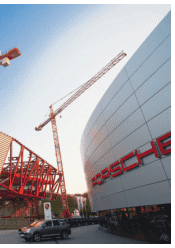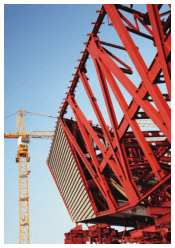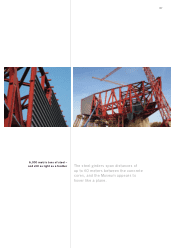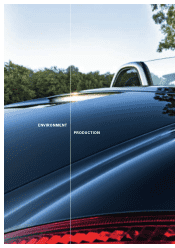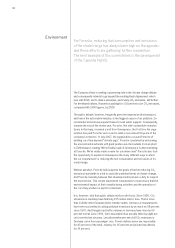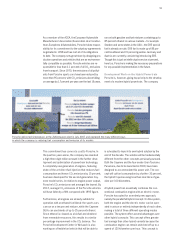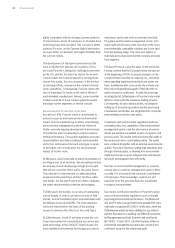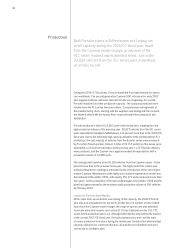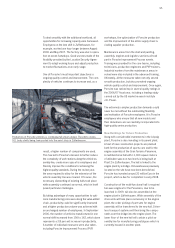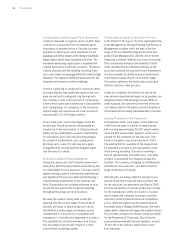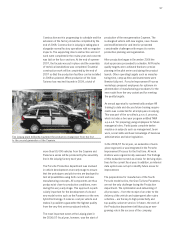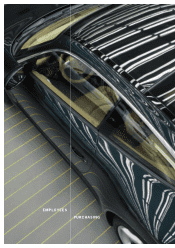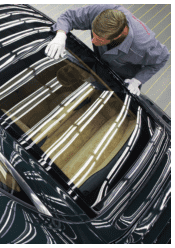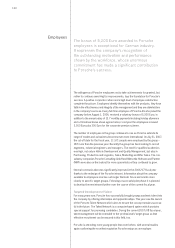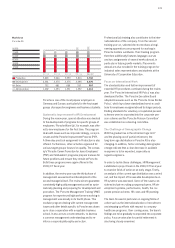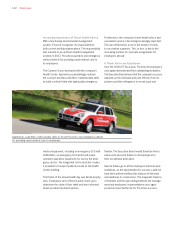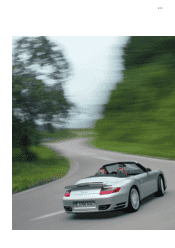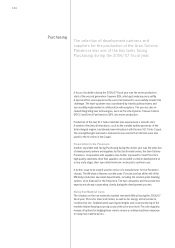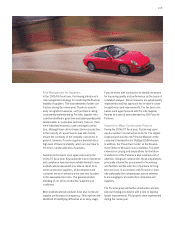Porsche 2006 Annual Report Download - page 97
Download and view the complete annual report
Please find page 97 of the 2006 Porsche annual report below. You can navigate through the pages in the report by either clicking on the pages listed below, or by using the keyword search tool below to find specific information within the annual report.
95
To deal smoothly with the additional workload, all
opportunities for increasing capacity were harnessed.
Employees on the late shift in Zuffenhausen, for
example, worked one hour longer between August
2006 and May 2007. The factory was also in opera-
tion on seven Saturdays. Good use was made of the
flexibility provided by the Location Security Agree-
ment to adapt working hours and adjust production
to market fluctuations at an early stage.
One of Porsche’s most important objectives is
ongoing quality control and improvement. The com-
plexity of vehicles continues to increase and, as a
result, a higher number of components are used.
This has led to Porsche’s decision to further reduce
the complexity of work stations along the vehicle as-
sembly line, create more space for employees and
thereby improve the conditions for achieving the
highest quality standards. During the review year,
the area required to allow for the extension of the
vehicle assembly line was cleared. Of course, the
necessary dismantling of existing halls took place
while assembly continued as normal, which in itself
posed particular challenges.
By taking advantage of many opportunities to opti-
mize manufacturing processes along the value-added
chain, productivity could be significantly improved
and a higher production volume was achieved with
an unchanged number of employees. In September
2006, the number of vehicles manufactured in one
normal shift increased from 156 to 162, which alone
represents a 3.8 percent increase in productivity.
A number of individual measures were also taken,
including Porsche Improvement Process (PVP)
workshops, the optimization of Porsche production
and the improvement of the entire supply chain in-
cluding supplier production.
Maintenance areas from the shell and painting,
assembly, engines and logistics sections all took
part in Porsche Improvement Process events.
Training was provided for the core teams, including
technicians, production engineers and PVP trainers.
Industrial workers from the maintenance areas in-
volved were also included in the advanced training.
Ultimately, all the measures taken not only served
smooth production, but also promoted ongoing
vehicle quality control and improvement. Once again,
Porsche was ranked top in several quality ratings in
the 2006/07 fiscal year, including a leading study
carried out by the US market research institute
J.D. Power.
The extremely complex production demands could
never be met without the outstanding flexibility
and motivation of Porsche employees. It is Porsche
employees who ensure that all new models and
their derivatives are successfully incorporated into
high-quality series production.
New Buildings for Future Production
Along with considerable investments in the Leipzig
plant, Porsche is also investing in its parent plant.
A host of new construction projects are planned
both for the production of sports cars and for the
engine assembly of the Gran Turismo Panamera.
A multifunctional hall with 11,000 square meters
of utilizable space on two levels is being built at
Plant 2 in Zuffenhausen. The hall is linked to the
engine plant by a bridge. Old warehouses previously
located on the site have now been demolished.
Porsche has invested around 20 million Euro in the
project, which is due for completion in early 2008.
Construction of the multi-functional hall is required
because engines for the Panamera, due to be
launched in 2009, will also be assembled at the
engine plant in Zuffenhausen. While assembly of the
drive units will take place exclusively in the engine
plant, the order picking of part sets for engine
assembly will be transferred to the new hall. Driver-
less transport systems will then bring the compo-
nents over the bridge into the engine plant. The
lower floor of the new hall will contain a pilot as-
sembly line for manufacturing prototypes which is
currently housed in another plant.
Production of Porsche vehicles is continuing full steam ahead. The photo shows
911 body shells being transported into the paint shop in Zuffenhausen.


